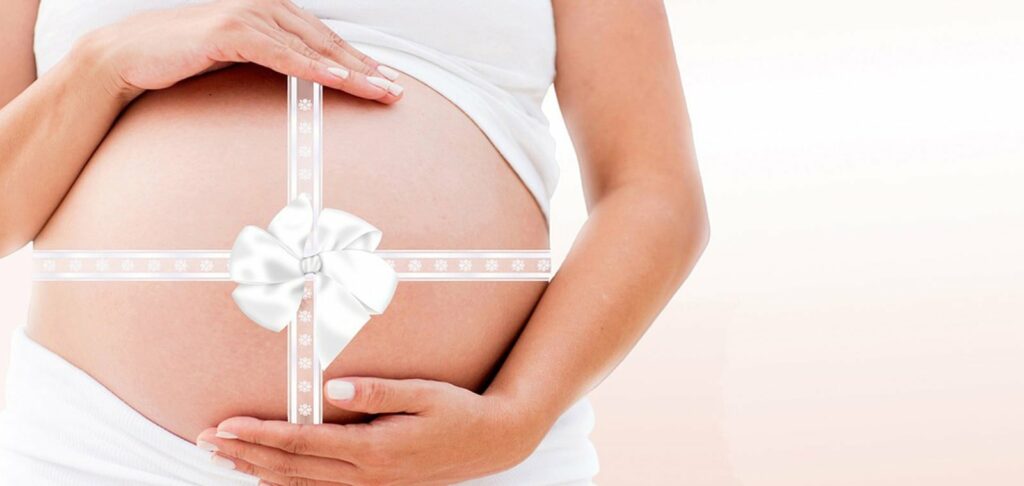
There are many omens with the help of which a pregnant woman can find out the sex of her future child. Can they be believed?
Popular omens for determining the sex of a baby
- Severe toxemia and severe morning sickness are signs that a baby girl will be born. According to statistics, more than 50% of women experience toxemia during the first trimester of pregnancy. However, the data on the relationship between its severity and the sex of the child are quite contradictory. Thus, in 1999, Swedish researchers confirmed that mothers of girls suffer from toxicosis more than mothers of boys, but in 2011, Iranian doctors who analyzed 2450 pregnancies, refuted their results. Morning sickness was reported by 79.5% of women who later gave birth to sons and only 72.3% of women who gave birth to daughters.
- Caprices and mood swings in a pregnant woman indicate the impending birth of a baby girl. Women carrying daughters are thought to have higher levels of estrogen, which affects emotions and behavior, but research does not support this theory. Levels of these hormones increase during pregnancy and decrease after delivery, regardless of the sex of the baby.
- Significant weight gain during the “interesting position”, especially in the waist and hips, portends the birth of a daughter. Scientific data do not confirm this omen. How much weight a woman gains during pregnancy depends on her hormonal background, metabolism, diet and lifestyle. And where exactly the extra kilograms “settle” is determined by the type of physique of the future mother.
- A wide and high belly is a sign of a girl’s birth, and a low and sharp belly is a sign of a boy’s birth. This is probably the most popular myth about determining the sex of a future child. But it has no scientific basis either. Obstetricians say that the height of the abdomen depends on the woman’s physique, her weight, level of fitness and strength of the pelvic floor muscles. But the shape of the abdomen is determined by the baby’s posture. If his back is parallel to the mother’s back, her abdomen will be wide and relatively flat, and if perpendicular – narrow and strongly protruding forward.
- If a woman is attracted to salty foods, she is carrying a boy, and if she is attracted to sweet foods, she is carrying a girl. There is no scientific evidence that changes in taste preferences during pregnancy are in any way related to the sex of the child. In addition, while carrying a child, a woman may want not only salty or sweet, but also spicy, bitter, sour. For 9 months, expectant mothers can change their taste preferences dramatically several times, “get addicted” to one particular product or engage in very daring culinary experiments, for example, smear jam on sausage or drink pickles with sweet tea.
- Deterioration of skin, hair and nails may mean that a woman is carrying a girl. Pregnancy is associated with a complex of endocrinological, immunological, metabolic and vascular changes that can affect a woman’s appearance in different ways. According to statistics, they are noted by more than 90% of expectant mothers. Sometimes they are positive (skin color improves, wrinkles smooth out, acne goes away), and sometimes they are negative (dermatitis develops, pigment spots appear, hair becomes dull, oily or too dry, and nails become brittle). However, there is no connection between these changes in appearance and the sex of the child.
- You can find out who will be born with a home test by adding a spoonful of baking soda to a container of morning urine. If it begins to hiss and foam – it will be a boy, and if there is no reaction – a girl. In fact, this test only determines the acidity of the urine: if its level is high, the soda reacts. Many factors affect the pH of the urine, such as diet, hydration level, the presence of urinary tract infections, and the presence of kidney stones. But the sex of the child is not one of them. Moreover, since the pH of the urine depends on many variables, during pregnancy the baking soda test may give opposite results if done more than once.
Where to look for the answer?
Unfortunately, all folk omens that allow you to determine the sex of the baby, accurate only in half of the cases, ie with the same success a pregnant woman can just flip a coin. However, there are still reliable ways to know whether she will give birth to a boy or a girl.
With the help of ultrasound, the sex of the baby is usually determined at 18-20 weeks, when his external genitalia are already clearly formed. However, sometimes the doctor may not be able to see them or make a mistake with the conclusion. Most often this happens if the fetus is not in the most convenient position for examination.
More accurate results are obtained by amniocentesis, i.e. amniotic fluid analysis (performed after the 15th week of pregnancy) or chorionic villus sampling (available from the 10th week). But since these procedures are invasive, and therefore involve a certain, albeit minor, risk, they are not used to determine the sex, and appointed only if there are suspicions of genetic anomalies or infectious diseases of the fetus.
It is better to use such a method as non-invasive prenatal testing – analysis of extracellular DNA of the fetus, which circulates in the blood of the mother. This study is prescribed from the 10th week of pregnancy to detect problems with chromosomes, but it can also be used to determine the sex of the baby. Since there are only two XX chromosomes in women, if the Y chromosome is detected during the test, the baby will be a boy.



